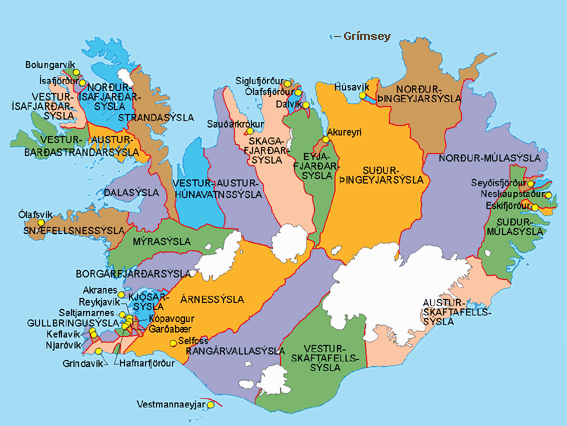| Current regular legal (Euro-+sized) standard number plate from Iceland | |
| Country | |
|---|---|
| Country code | IS |
| Current series | |
| Size | 520 mm × 110 mm 20.5 in × 4.3 in |
| Serial format | Not standard |
| Colour (front) | Blue on White |
| Colour (rear) | Blue on White |
In Iceland, vehicle registration plates are issued by the Icelandic Transport Authority. The plates are made of aluminium with reflective base and embossed characters. There are eleven different styles corresponding to the vehicle's type and tax status. Icelandic registration plates follow the EU standard for registration plates, with the Icelandic emblem with the letters IS on the left side with a standard (EU) size of 520 x 110mm. [1] [2]
Contents
- History
- Type of plates
- Diplomatic Plates
- Safety inspection
- Old district plates
- See also
- References
- External links
New registered plates use three letters and two digits (e.g. ABC12) in Helvetica Neue. Prior to 2007, the format AB 123 was used (and is still valid), however no new plates are issued in this format. The plates are issued randomly, they are not issued sequentially and they do not have any geographic coding. Vehicles keep the same registration number for life. If a vehicle is, e.g., changed to commercial vehicle it gets commercial plates but they have the same registration number. All plates have validation stickers in the middle that indicate the year the vehicle is due for safety inspection. [1] Last two digits of the year number are shown in white or black on the sticker. The colour of the stickers is different depending on the year. Location of the sticker is different in case it is a vanity plate. [3]
All registration plates in Iceland are produced at the Litla-Hraun state prison by inmates. [4] [5]
The plates are available in 3 sizes for cars:
- European standard 520 mm × 110 mm (20.5 in × 4.3 in)
- North American standard 305 mm × 155 mm (12.0 in × 6.1 in)
- European square 280 mm × 200 mm (11.0 in × 7.9 in).
Motorcycle plates are 240 mm × 130 mm (9.4 in × 5.1 in).












